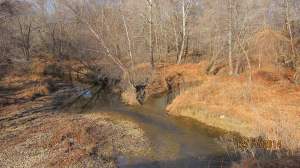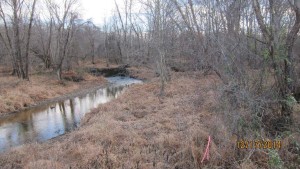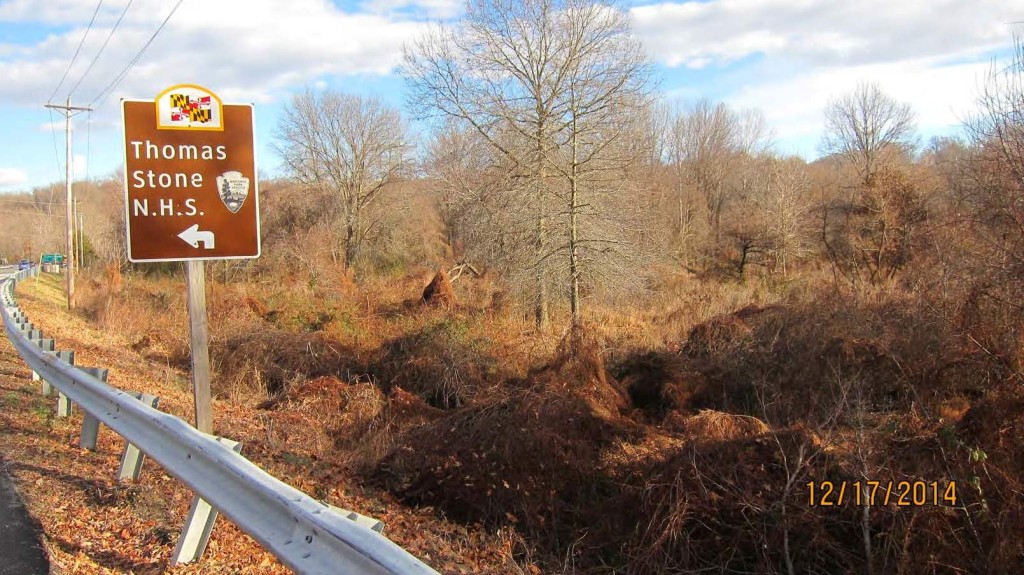Port Tobacco Creek Stream and Wetland Reconnect Project
After years of cooperative work between a local landowner and PTRC, a mutual long term goal is about to be realized. The elements are in place to begin to restore a dried-out wetland along a 2,800-foot-long section of the Port Tobacco Creek. This stream section extends from the Route 6 bridge at Rose Hill Road south into the Port Tobacco River at Mary Lane. This restoration is critical to the health of the Port Tobacco River. The project will involve sloping the highly eroded stream banks and raising the stream bottom to send stream overflow into the now dry wetlands, which will filter out harmful nutrients, bacteria, sediment, and toxic materials from the stream overflow, resulting in improved water quality in the Port Tobacco River.
 Over the past 40–50 years, the stream has eroded and deepened because of the increased volume of storm water from developments and discharges from waste water treatment plants into the large wetland north of the bridge. This has left the former wetland south of the bridge dry, driving out the waterfowl, other birds, and wildlife that once lived there. The project will restore the highly eroded stream banks and bottom to allow the natural overflow of the stream to go into the former wetlands south of the bridge.
Over the past 40–50 years, the stream has eroded and deepened because of the increased volume of storm water from developments and discharges from waste water treatment plants into the large wetland north of the bridge. This has left the former wetland south of the bridge dry, driving out the waterfowl, other birds, and wildlife that once lived there. The project will restore the highly eroded stream banks and bottom to allow the natural overflow of the stream to go into the former wetlands south of the bridge.
The restored wetlands will filter out harmful nutrients, bacteria, sediment, and toxic materials from the stream overflow, resulting in improved water quality in the Port Tobacco River. Initial estimates from site visits by LimnoTech, Maryland Department of the Environment (MDE), Charles County Planning and Growth (PGM), and PTRC predict that 611 pounds of nitrogen, 235 pounds of phosphorus, 212 tons of sediment, and yet to be determined levels of bacteria will no longer enter the river each year.
 This will mean a safer river for swimming and water sports and fewer algae blooms and sediment that cloud up the water and kill or drive out fish, harm boat engines, and restrict boat passage, especially in Riviera channels and to landowners’ docks. Surges of stream water during storm events will flow into the restored wetlands instead of flooding low-level properties in the Riviera. The wetlands will provide an improved habitat that should bring back the waterfowl and wildlife that were enjoyed in years past. Financial benefits will be to maintain or raise property values and expand opportunities for local businesses.
This will mean a safer river for swimming and water sports and fewer algae blooms and sediment that cloud up the water and kill or drive out fish, harm boat engines, and restrict boat passage, especially in Riviera channels and to landowners’ docks. Surges of stream water during storm events will flow into the restored wetlands instead of flooding low-level properties in the Riviera. The wetlands will provide an improved habitat that should bring back the waterfowl and wildlife that were enjoyed in years past. Financial benefits will be to maintain or raise property values and expand opportunities for local businesses.
